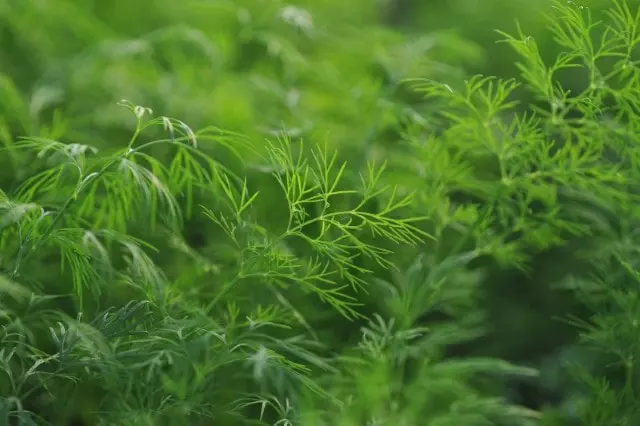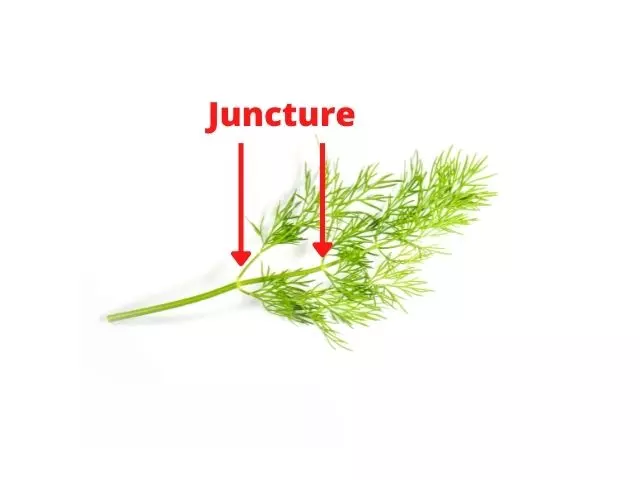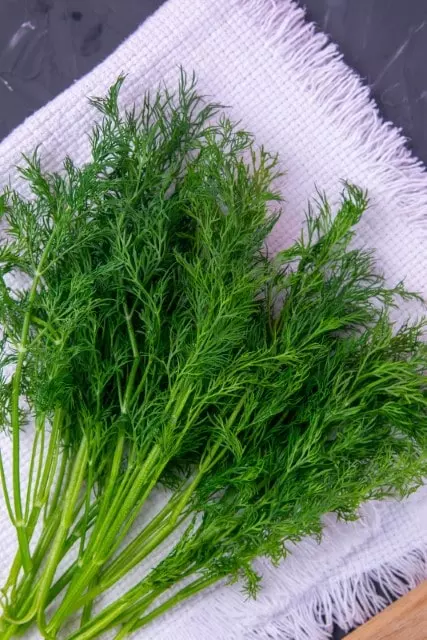Dill is a well-known herb used in several areas besides the culinary one since it is also used in the cosmetic and pharmaceutical industries. Dill is very easy to grow and has a fast growth rate. However, when harvesting dill, cutting the herb without harming the plant is best. Harvesting dill properly allows you to enjoy its flavorful leaves without regrowing. The best way to harvest dill without killing the plant is to avoid cutting the stems too close to the base of the plant. This article will explain how to cut dill without killing the plant and how to harvest dill seeds to regrow this wonderful herb in your garden. Let’s start.
Table of Contents
When to Harvest Dill
When to Harvest Dill? Harvest dill 6 to 8 weeks after planting. It is also important that the dill be at least 8″ (20 cm) tall and have 4 to 5 leaves per stem before cutting the dill.
Harvest or pick dill leaves in two periods of plant cultivation. The first time of the year to cut dill is between July and August (Northern Hemisphere), while the second is between September and October (Northern Hemisphere).
If the objective is to harvest dill to elaborate essential oil of its parts, cutting the plant should be done when the time its flowers are open is ending.
It is advisable to water the dill plant the day before and after harvesting. The best time to harvest dill is in the morning when temperatures are lower.

How to Harvest Dill Without Killing the Plant
How to Harvest Dill Without Killing the Plant? Cutting dill without killing the plant is very easy if you follow the following tips:
First, you must give the dill time to grow. As mentioned above, you should wait 6 to 8 weeks after planting the dill to start harvesting it. Ensure the dill is 8″ (20 cm) tall and has at least four leaves per stem.
Water the dill plants the day before and the day after harvesting. This will allow them to recover faster after harvesting.
Use sharp, disinfected scissors to harvest dill without killing the plant. This is very important to avoid damaging the plant. Cut the dill stems from being harvested at the juncture (see image below). Cutting the dill at the juncture will allow it to recover and regrow.
During the first dill, harvest does not harvest more than 1/3 of the plant and gives it time to recover. Then you should harvest more dill, but never harvest more than 2/3 of the plant. I recommend always harvesting with sharp scissors and not pulling the stems so as not to damage the dill plant.
Always harvest the oldest leaves of the dill. These will be the outer leaves. Start harvesting the outer stems of the dill so that it continues to grow properly.

How to Harvest Dill Seeds
How to Harvest Dill Seeds to regrow this wonderful herb in your garden? Harvest dill seeds when the flowers are ripe between September and October (Northern Hemisphere).
The seeds used as a culinary ingredient or in healing recipes should wait until the flowers have a dark shade, which is the appropriate harvest time.
Once the dill flowers are dry, cut them with sharp scissors and place them in a paper bag. Then let them dry in a cool place to remove any remaining moisture. If you will use the seeds for sowing again, do not store them for more than 1 to 2 years, this will ensure a high germination rate.
Recommended Post: How to Grow Dill
How to Store Fresh Cut Dill
Now that you know how to harvest dill without killing the plant, we will explain how to store cut dill.
How to Store Fresh-Cut Dill? You should keep fresh dill in the refrigerator for a week. It may even last a few days longer. Once the dill is harvested, wash it with cold water and dry it as best you can, then wrap it in paper napkins and place it in an airtight plastic bag. Then place it in the vegetable drawer of the refrigerator.
Another way to store dill is to freeze dill. Wash the dill and remove excess moisture. You should then freeze the dill whole or chopped and store it in a plastic bag in the freezer. Do not keep it in the freezer for over 3 to 4 months.
The last method of storing dill is one of my favorites for storing almost all herbs. This is drying. To dry dill, you should use a food dehydrator, but if you do not have a dehydrator, you should dry dill in the following way:
- Hang the dill upside down in a well-ventilated place.
- Let the dill dry for at least two weeks.
- When you touch the dill and notice that it crumbles to the touch, that is when the dill is dry.
- Store dried dill in an airtight jar for up to 1 year. Store the jar in a cool, dry place.
Final Thoughts About Cutting And Picking Dill Without Killing The Plant
Let’s see a couple of final thoughts about cutting and picking dill without killing the plant. How to cut dill without killing the plant and needing to regrow is easy. Also, remember the tips provided in this article to store your fresh-cut dill from your garden. These are the best methods for storing fresh cut dill at home.
We hope this article on how to harvest dill without killing the plant will be of great use and that you will have an excellent dill harvest all season long.

